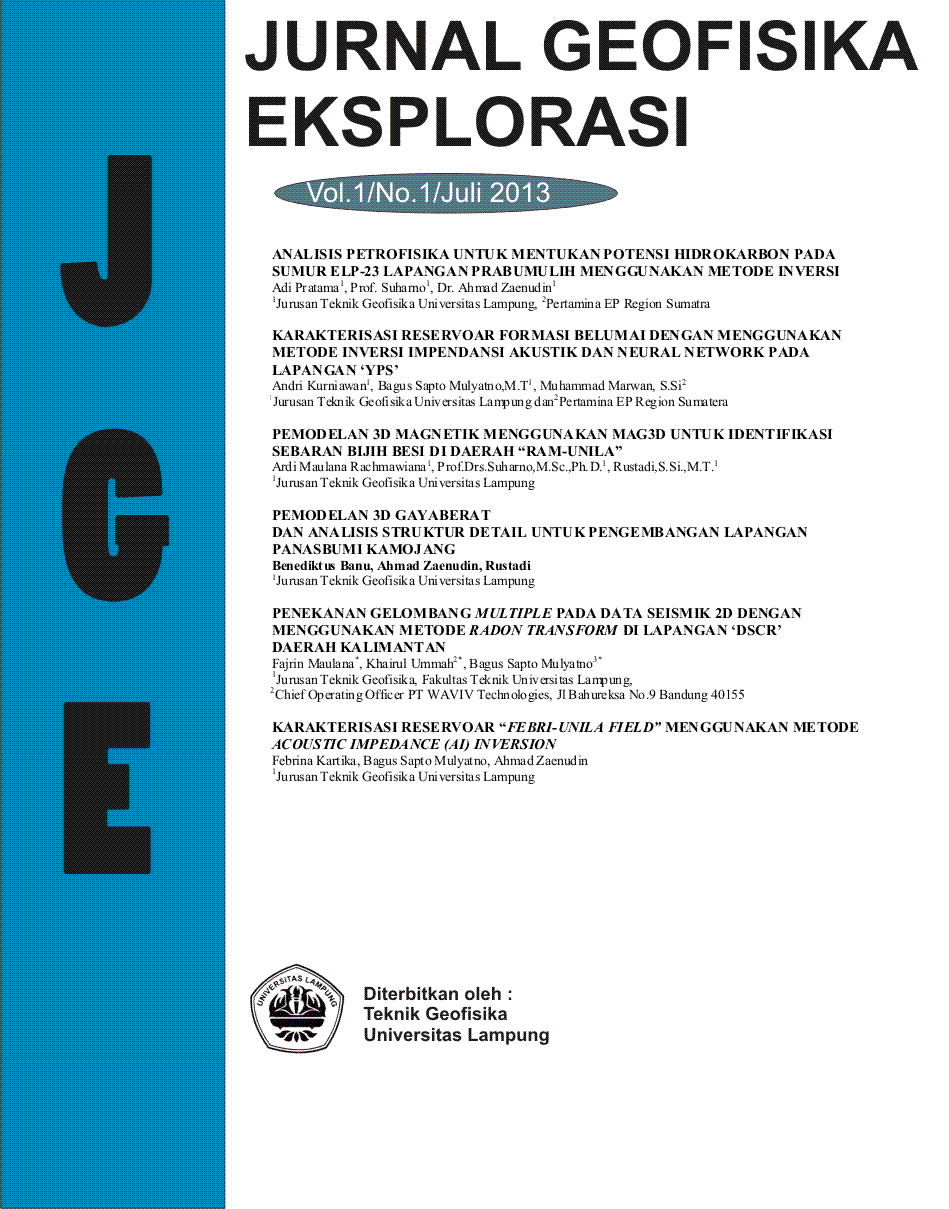ANALISIS PETROFISIKA UNTUK MENTUKAN POTENSI HIDROKARBON PADA SUMUR ELP-23 LAPANGAN PRABUMULIH MENGGUNAKAN METODE INVERSI
DOI:
https://doi.org/10.23960/jge.v1i01.202Abstract Views: 155 File Views: 353
Abstract
Well Logging play an important role in the activities of exploration and exploitation of oil
and gas. Well logging is a technique for obtaining subsurface data by using a measuring
instrument that is inserted into the wellbore, to evaluate the formation, identification of the
characteristics of rocks in the subsurface and petrophysical analysis. Study of petrophysical
properties can be done with qualitative analysis (quick look interpretation ) and quantitative
analysis ( calculation ) which will then be acquired hydrocarbon zones in the form of
productive layer thickness and the depth of the wells.
The research Field is located in Prabumulih on working area PT Pertamina EP Region
Sumatra. well logging carried out ELP-23 at a depth of 1374,9528 – 2309,7744 m, which is
divided into five zones based on hydrocarbon layer., zone 1 (one), 2 (two), 3 (three), 4 (four),
and 5 (five). Where the data processed by using software Geoframe 4.4 with Inversion
method .
Cut-off value for hydrocarbon zones in the well is Vsh ≤ 27%, Φ ≥ 15%, Sw ≤ 75%.
Research results on the well ELP-23 suggests that hydrocarbon zones in zone 3 (three), 4
(four), and 5 (five) which is the Talang Akar formations. Where the net pay thickness is zone
3: 47.50 m, zone 4: 5,17 m, zone 5: 17,34 m
Downloads
Published
2013-07-07
Issue
Section
Articles
License
Penulis yang mempublikasikan jurnal ini setuju dengan ketentuan sebagai berikut:
- Penulis mempertahankan hak cipta dan memberikan jurnal hak publikasi pertama dengan pekerjaan secara bersamaan berlisensi di bawah Creative Commons Attribution yang memungkinkan orang lain untuk berbagi pekerjaan dengan pengakuan kepengarangan karya dan publikasi awal di jurnal ini.
- Penulis mampu untuk masuk ke dalam terpisah, pengaturan kontrak tambahan untuk distribusi non-eksklusif versi diterbitkan jurnal pekerjaan (misalnya, posting ke sebuah repositori institusi atau menerbitkannya dalam sebuah buku), dengan pengakuan publikasi awal dalam jurnal ini.
- Penulis diizinkan dan didorong untuk mengirim karya mereka secara online (misalnya, dalam repositori institusi atau website mereka) sebelum dan selama proses pengiriman, karena dapat menyebabkan pertukaran produktif, serta sebelumnya dan kutipan yang lebih besar dari karya yang diterbitkan (Lihat Pengaruh Open Access).

